Directions: Read the following Pie chart carefully and answer the following questions:-
The pie chart shows the percentage of candidates in 6 different shifts of an examination.
Total number of candidates = 5500
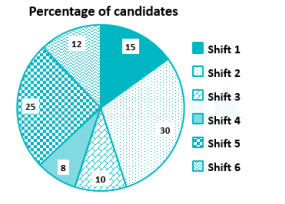
The number of candidates in shift 1 is how much more than the number of candidates in shift 4?
260
385
425
360
Step by step video & image solution for Directions: Read the following Pie chart carefully and answer the following questions:- The pie chart shows the percentage of candidates in 6 different shifts of an examination. Total number of candidates = 5500The number of candidates in shift 1 is how much more than the number of candidates in shift 4? by Maths experts to help you in doubts & scoring excellent marks in Class 14 exams.
Similar Questions
Directions: Read the following Pie chart carefully and answer the following questions:- The pie chart shows the percentage of candidates in 6 different shifts of an examination. Total number of candidates = 5500

Number of candidates in shift 6 is what percentage more/less than number of candidate in shift 4?View SolutionDirections: Read the following Pie chart carefully and answer the following questions:- The pie chart shows the percentage of candidates in 6 different shifts of an examination. Total number of candidates = 5500
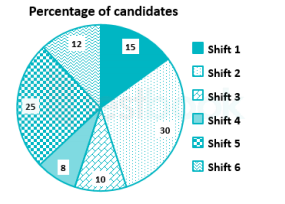
If 215 candidates in shift 2 were absent, then find the number of candidates present in the same shift.View Solution
Knowledge Check
- Question 1 - Select One
In an examination, 65% pass out of total candidates. If the number of failed candidates is 420, find the total number of students.
A1600B840C1000D1200 - Question 2 - Select One
Study the following pie chart carefully and answer the questions. The pie chart represents the percentage of people involved in various occupations.(total number of people-20000).

How many more people are involved in service than in trade?A3360B2660C1660D660 - Question 3 - Select One
Study the following pie chart carefully and answer the questions. The pie chart represents the percentage of people involved in various occupations.
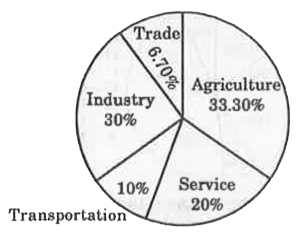
The ratio of the people involved in service to that in industry isA1:2B2:3C3:4D3:2
Directions: Read the following Pie chart carefully and answer the following questions:- The pie chart shows the percentage of candidates in 6 different shifts of an examination. Total number of candidates = 5500

If 40% candidates in shift 6 were failed, then find the number of candidates passed the examination in the same shift.View SolutionDirections: Read the following Pie chart carefully and answer the following questions:- The pie chart shows the percentage of candidates in 6 different shifts of an examination. Total number of candidates = 5500
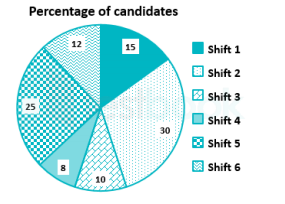
If ratio of male to female candidates in shift 3 is 6 : 5, then find number of female candidates in shift 3) 1) 350 2) 225View SolutionDirections: Read the following Pie chart carefully and answer the following questions:- The pie chart shows the percentage of candidates in 6 different shifts of an examination. Total number of candidates = 5500
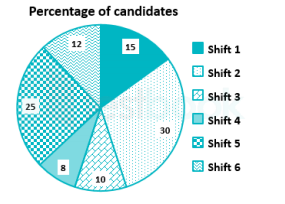
Find the average number of candidates in shift 2, shift 3 and shift 4 together in the examination.View SolutionStudy the following pie chart carefully and answer the questions. The pie chart represents the percentage of people involved in various occupations.
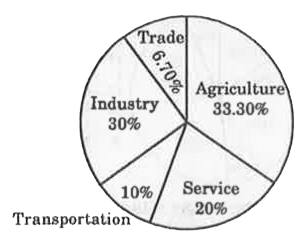
The angle made by the people involved in service in the given pie-chart isView SolutionDirections (Q. Nos. 1 - 5) Study the following graph and pie chart carefully and answer the Questions that follow.

What is the number of females in organisation D?View Solution

